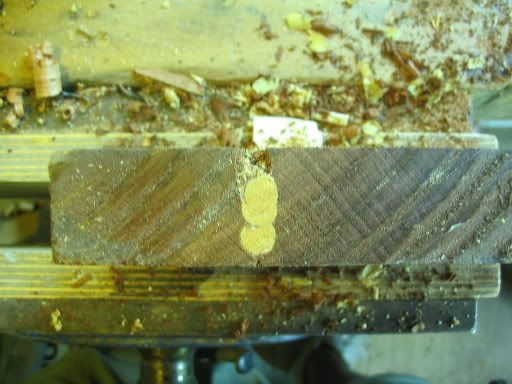builderchad
Established Member
SWMBO inherited this little statuette of the Immaculate Conception when her mum died, who got it from a monastery in Singapore many years ago when they were tearing it down. It spent the last 15 years in the garden and is not in a good way as a result. Its actually a very nice looking sculpture and I would like to restore it to its former glory.
It seems to consist of two pieces stuck together which have since split apart a lot. Right side:

It also has splits on her face and torso but there are no obvious seams on the front or back (just the sides):

The bottom shows the split very clearly and also evidence of little critters chewing away at her:

Here is what I would like to find out:
1) I assume this was made no less than 40 years ago and would like to split it along the right-left seam and plane down this to a flat again. Is this the right approach?
2) If it is - what is the best way to split the two pieces? Would they have been using hide glues back then?
3) I assume that the face and torso cracks are just dryed out wood and not evidence of splitting seams where wood has been joined. Whats the best way to fill these cracks?
I have no idea what wood it is but if I do split her to plane down the front and back pieces true then that would probably reveal the grain nicely and I could try find out what she's made of then.
All and any advice most appreciated, thanks.
Chad.
(P.S. sorry haven't been around the last few weeks, I am playing Murderer #1 in a student production of Macbeth here in Oxford so its been mad with rehersals etc. )
)
It seems to consist of two pieces stuck together which have since split apart a lot. Right side:

It also has splits on her face and torso but there are no obvious seams on the front or back (just the sides):

The bottom shows the split very clearly and also evidence of little critters chewing away at her:

Here is what I would like to find out:
1) I assume this was made no less than 40 years ago and would like to split it along the right-left seam and plane down this to a flat again. Is this the right approach?
2) If it is - what is the best way to split the two pieces? Would they have been using hide glues back then?
3) I assume that the face and torso cracks are just dryed out wood and not evidence of splitting seams where wood has been joined. Whats the best way to fill these cracks?
I have no idea what wood it is but if I do split her to plane down the front and back pieces true then that would probably reveal the grain nicely and I could try find out what she's made of then.
All and any advice most appreciated, thanks.
Chad.
(P.S. sorry haven't been around the last few weeks, I am playing Murderer #1 in a student production of Macbeth here in Oxford so its been mad with rehersals etc.







